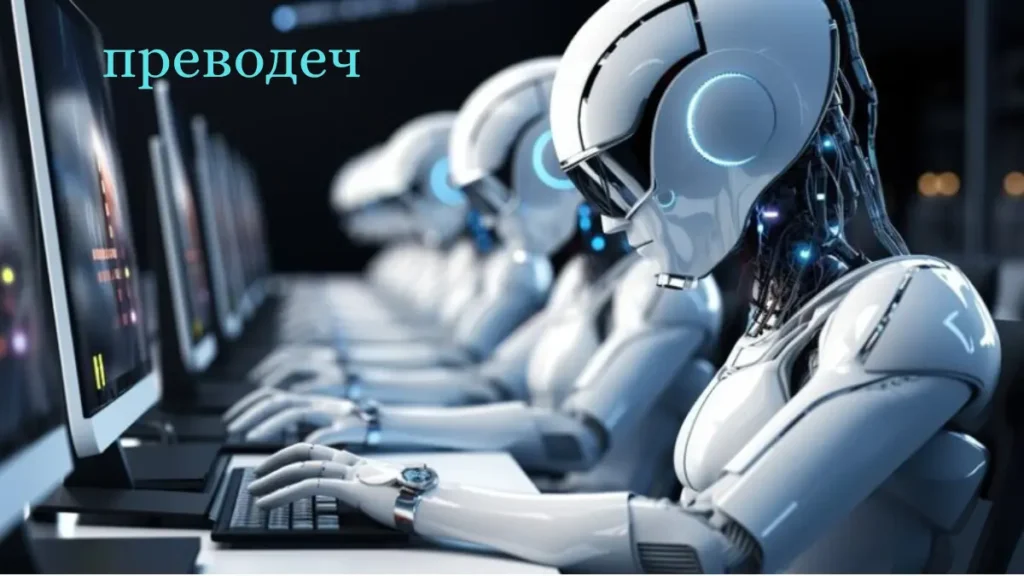преводеч
In today’s globalized world, the demand for accurate and culturally sensitive translations is higher than ever. The term “преводеч” refers to the concept and practice of translation, encompassing everything from simple text translations to complex multilingual communication. This article explores the role of преводеч, the challenges involved, the evolution of translation technology, and the importance of human touch in translation. By the end of this guide, you’ll have a clear understanding of how преводеч impacts various industries and why choosing the right translation service is crucial.
Understanding the Role of преводеч
Преводеч, or translation, is the bridge that connects different cultures, languages, and ideas. It plays a critical role in international communication, enabling businesses, governments, and individuals to share information across linguistic barriers. Whether translating a simple document or localizing an entire website, the process requires precision, cultural awareness, and expertise in both the source and target languages.
Challenges in Translation
Translating text from one language to another is not always straightforward. Some challenges include:
- Cultural Nuances: Different cultures interpret words and phrases differently.
- Language Structure: Grammar, syntax, and idioms vary widely across languages, making direct translations often impossible.
- Contextual Relevance: The context of the original text must be preserved in the translation, which can be difficult when dealing with abstract or complex ideas.
These challenges highlight the importance of professional translators who understand both the linguistic and cultural context of the content they work with.
Evolution of Translation Technology
The translation industry has seen significant advancements with the advent of technology. Automated translation tools, such as Google Translate, use sophisticated algorithms to provide quick translations. However, these tools often struggle with context and nuance, which are essential for accurate translations.
- Machine Translation: Initially, machine translation provided basic word-for-word translations. However, these often lacked context and accuracy.
- Neural Machine Translation (NMT): The development of NMT has improved translation quality by understanding context and generating more accurate translations. NMT systems learn from vast amounts of data, improving over time.
- Translation Management Systems (TMS): These platforms help businesses manage large-scale translation projects, offering features like workflow automation, quality assurance, and integration with other software.
While technology has revolutionized the translation industry, it still cannot replace the need for human expertise.
See also: amv33x-features-benefits-and-applications
Human Touch in Translation
Despite the advances in translation technology, the human touch remains irreplaceable. Professional translators bring a deep understanding of cultural nuances, idiomatic expressions, and contextual relevance that machines cannot replicate. They can adapt content to resonate with the target audience while preserving the original message’s integrity.
- Cultural Sensitivity: Translators understand the cultural context of both the source and target languages, ensuring the translation is appropriate for the audience.
- Creativity: Translators often need to creatively interpret text, especially in marketing and literary translations, to maintain the original tone and impact.
Benefits of Professional Translation Services
Using professional translation services offers several advantages:
- Accuracy: Professional translators ensure that the translated content is accurate and contextually relevant.
- Consistency: Maintaining consistency in terminology and style is crucial for brand identity, and professional services can ensure this across multiple languages.
- Time Efficiency: Professional translation services can handle large projects efficiently, saving time while maintaining quality.
- Cultural Adaptation: They provide culturally adapted translations that resonate with the target audience, essential for marketing and communication.
Industries Relying on Translation Services
Various industries rely heavily on professional translation services to operate globally:
- Legal: Accurate translations of contracts, agreements, and legal documents are crucial for international law.
- Medical: Translating medical records, research papers, and patient information ensures clear communication in healthcare.
- E-commerce: Global online businesses require translation services to reach diverse markets and provide localized experiences.
- Tourism: Translation services help attract international tourists by providing information in multiple languages.
- Media and Entertainment: Subtitles, dubbing, and content localization are essential for reaching global audiences.

Common Misconceptions about Translation
Several misconceptions about translation services can lead to misunderstandings:
- “Translation is just word-for-word replacement.”: Effective translation requires understanding context, culture, and idiomatic expressions.
- “Machine translation is sufficient.”: While helpful, machine translation often lacks the accuracy and nuance needed for professional use.
- “All translations are the same.”: The quality of translation can vary significantly, and choosing the right service is essential for effective communication.
Choosing the Right Translation Service
Selecting the right translation service is critical for ensuring your message is accurately conveyed in the target language.
- Expertise: Choose a service with expertise in your industry and the specific languages involved.
- Quality Assurance: Look for services that offer thorough quality checks, including proofreading and editing by native speakers.
- Technology Integration: Modern translation services should utilize technology like TMS and NMT while still relying on human translators for quality.
- Cultural Understanding: Ensure the service understands the cultural context of both the source and target languages to avoid miscommunication.
The Future of Translation
The future of преводеч is shaped by the ongoing development of technology and the increasing demand for multilingual communication. Here’s what to expect:
- Enhanced AI: Artificial Intelligence will continue to improve, providing more accurate translations and assisting human translators in complex tasks.
- Integration with Other Technologies: Translation services will integrate with other digital tools, like content management systems, to streamline global communication.
- Globalization: As businesses expand globally, the demand for high-quality translation services will increase, driving innovation in the field.
- Focus on Human-AI Collaboration: The future will likely see more collaboration between human translators and AI, combining the strengths of both to achieve optimal results.
Case Studies of преводеч
Examining real-world applications of преводеч highlights its importance:
- E-commerce Expansion: A global e-commerce company used professional translation services to localize its website for multiple markets, resulting in a significant increase in international sales.
- Legal Translations in Multinational Deals: A law firm required precise translations of legal documents for a cross-border merger. Professional translation ensured that all parties clearly understood the terms, preventing legal disputes.
- Medical Research Dissemination: Translating medical research papers allowed a pharmaceutical company to share its findings with the global scientific community, enhancing collaboration and innovation.
Tips for Effective Translations
Here are some tips to ensure your translations are effective:
- Understand the Audience: Tailor the translation to the cultural and linguistic context of the target audience.
- Use Professional Services: Rely on professional translation services for accuracy and quality, especially for critical documents.
- Proofread: Always proofread translations to catch any errors or misinterpretations.
- Leverage Technology: Use technology to assist with translations, but always review the output manually.
- Maintain Consistency: Ensure consistency in terminology and style across all translated materials.
Exploring Multilingual SEO
Multilingual SEO is essential for businesses targeting international markets. It involves optimizing translated content for search engines in multiple languages, ensuring that your website ranks well in different regions. Key aspects include:
- Keyword Research: Conduct keyword research in each target language to identify the terms users are searching for.
- Localized Content: Create content that resonates with the local audience, considering cultural nuances and preferences.
- Technical SEO: Implement hreflang tags, local domain structures, and other technical elements to support multilingual SEO efforts.
- Link Building: Build backlinks from local websites to improve your site’s authority in different languages.
Cultural Sensitivity in преводеч
Cultural sensitivity is crucial in преводеч. Misunderstanding cultural nuances can lead to miscommunication and even offense. Professional translators must be culturally aware, ensuring that translations respect local customs, traditions, and social norms.
Conclusion
Translation, or преводеч, is more than just converting words from one language to another. It’s about conveying meaning, context, and culture. As global communication becomes increasingly important, the demand for accurate, culturally sensitive translation services continues to grow. Whether you’re a business looking to expand globally or an individual needing precise translations, understanding преводеч is essential. By choosing the right translation service, you can ensure that your message is effectively communicated across linguistic and cultural boundaries.

